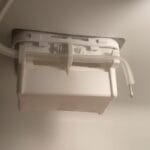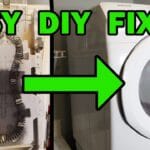Stihl hedge trimmers are reliable and powerful tools. But sometimes, they can face issues.
In this post, we will explore common problems with Stihl hedge trimmers. Hedge trimmers are essential for keeping your garden neat. But like any tool, they can malfunction. Knowing how to troubleshoot these issues can save you time and money.
Whether it’s a problem with starting, unusual noise, or poor cutting, we have you covered. This guide will help you identify and fix common problems with your Stihl hedge trimmer. Let’s dive into the details and get your trimmer back to peak performance.

Credit: arbtalk.co.uk
Common Issues
Stihl hedge trimmers are reliable and powerful. But, like all machines, they can have issues. Understanding these common problems can save you time and money. Let’s explore some typical issues and how to fix them.
Engine Won’t Start
If the engine won’t start, check the fuel. Old or dirty fuel can prevent starting. Make sure the fuel mix is correct. Inspect the spark plug. A damaged spark plug might need replacement. Look for any loose wires. Connections should be tight. Clean the air filter. A clogged air filter can restrict airflow. This can stop the engine from starting.
Blades Won’t Move
If the blades don’t move, inspect the blade assembly. Debris can block the blades. Clean any dirt or leaves from the blades. Check the blade bolts. Loose bolts can cause blade issues. Tighten them if needed. Lubricate the blades. Lack of lubrication can cause the blades to stick. Use the recommended oil. Ensure the gearbox is in good condition. A damaged gearbox can prevent blade movement. If needed, replace damaged parts.
Fuel Problems
Fuel problems are a common issue with Stihl hedge trimmers. These problems can affect the performance and efficiency of your tool. Identifying and solving fuel-related issues is essential for smooth operation. Below, we will discuss two main aspects: checking fuel quality and replacing the fuel filter.
Checking Fuel Quality
Old or contaminated fuel can cause your hedge trimmer to malfunction. Always use fresh, high-quality fuel. Check the fuel tank for any signs of debris or dirt. If you find any, clean the tank thoroughly. It’s best to replace old fuel with a new mixture. This ensures optimal performance.
Replacing Fuel Filter
A clogged fuel filter can restrict the flow of fuel. This leads to poor performance. Locate the fuel filter in the fuel tank. Use needle-nose pliers to gently pull it out. Replace the old filter with a new one. Make sure the new filter fits properly. This simple step can make a big difference.
Spark Plug Maintenance
Regular spark plug maintenance ensures your Stihl hedge trimmer runs smoothly. A clean, working spark plug can make starting your trimmer easy. It also ensures optimal engine performance. Ignoring the spark plug can lead to hard starts or poor performance. Here’s how to inspect and replace the spark plug.
Inspecting Spark Plug
First, turn off the hedge trimmer and let it cool. Locate the spark plug. It’s usually near the engine. Remove the spark plug wire. Use a spark plug wrench to unscrew the spark plug. Check the electrode for wear or deposits. A healthy spark plug has a light brown electrode. If it’s black or oily, it needs cleaning or replacing.
Replacing Spark Plug
If the spark plug is dirty or damaged, replace it. Buy a new spark plug that matches your trimmer’s specifications. Screw the new spark plug into the engine by hand first. Tighten it with the spark plug wrench. Reattach the spark plug wire. Start the trimmer to ensure it works properly.
Air Filter Cleaning
Keeping your Stihl hedge trimmer in top condition requires regular maintenance. One key aspect is cleaning the air filter. A clean air filter ensures smooth operation and long-lasting performance. Let’s explore the steps involved in this important process.
Removing Air Filter
First, locate the air filter cover on your Stihl hedge trimmer. This is usually situated near the engine. Unscrew the cover using a screwdriver or by hand, depending on the model.
Carefully remove the cover to expose the air filter. Gently lift the air filter out. Be cautious not to damage the filter during this process.
Cleaning And Reinstalling
Once the air filter is removed, inspect it for dirt and debris. If the filter is clogged, it needs cleaning. Use a soft brush or compressed air to remove the dirt.
For more thorough cleaning, wash the filter in soapy water. Rinse it well and let it air dry completely before reinstalling.
After the filter is clean and dry, place it back into its original position. Secure the air filter cover back in place by screwing it tightly. Ensure all parts are properly aligned.
A clean air filter contributes to better engine performance. Regular maintenance of your Stihl hedge trimmer ensures it runs smoothly and lasts longer.
Blade Maintenance
Maintaining the blades of your Stihl hedge trimmer is crucial for its performance. Sharp and well-lubricated blades ensure clean cuts and extend the life of your tool. In this section, we’ll cover essential blade maintenance tips, including sharpening and lubricating your hedge trimmer blades.
Sharpening Blades
Regular blade sharpening keeps your hedge trimmer efficient. Dull blades can tear leaves and branches, causing plant damage. Use a mill file or a sharpening stone. Hold the blade steady and move the file along the edge, maintaining the original angle. Sharpen both sides evenly to ensure balance. Always wear safety gloves to protect your hands during this process.
Lubricating Blades
Lubrication reduces friction and prevents rust. Use a high-quality lubricant designed for hedge trimmers. After each use, clean the blades with a brush or cloth to remove debris. Apply the lubricant generously along the blade edges. Wipe off any excess lubricant with a clean cloth. Lubricated blades move smoothly and last longer.

Credit: www.youtube.com
Carburetor Adjustments
Stihl hedge trimmers are reliable tools for garden maintenance. But sometimes, they need adjustments to perform well. One crucial aspect is the carburetor. Proper adjustment ensures your hedge trimmer runs smoothly. This section covers essential steps for adjusting the carburetor.
Adjusting Idle Speed
The idle speed must be set correctly for optimal performance. Follow these simple steps:
- Locate the idle adjustment screw. It’s usually marked “I” or “LA”.
- Turn on the hedge trimmer and let it warm up.
- Turn the screw clockwise to increase the idle speed.
- Turn the screw counterclockwise to decrease the idle speed.
- Adjust until the engine idles smoothly without stalling.
Cleaning Carburetor
A clean carburetor is vital for a well-functioning hedge trimmer. Dirt can cause performance issues. Follow these steps to clean it:
- Disconnect the spark plug for safety.
- Remove the air filter cover and the air filter.
- Locate the carburetor and remove it carefully.
- Use a carburetor cleaner spray to clean the parts.
- Ensure all small passages are clear of debris.
- Reassemble the carburetor and replace the air filter.
- Reconnect the spark plug and test the trimmer.
Regular cleaning keeps your hedge trimmer in top shape. It prevents common carburetor problems.
Electrical System Checks
Stihl hedge trimmers are reliable tools for maintaining your garden. But like all machinery, they can experience issues. Electrical problems are common. These checks can help you diagnose and fix them.
Inspecting Ignition Coil
The ignition coil provides power to the spark plug. If the coil fails, the trimmer won’t start. Start by removing the spark plug. Check the coil for visible damage. Cracks or burns indicate a problem. Use a multimeter to test the coil. Set the multimeter to the ohms setting. Connect the probes to the coil terminals. A healthy coil shows a reading between 2,500 and 5,000 ohms. If the reading falls outside this range, replace the coil.
Testing Switches
Faulty switches can prevent the trimmer from operating. Start by checking the power switch. Ensure it’s in the correct position. Use a multimeter to test the switch. Set the multimeter to the continuity setting. Place one probe on each terminal of the switch. Activate the switch. The multimeter should beep, indicating continuity. If it doesn’t, replace the switch. Also, check the safety switch. Follow the same steps as the power switch. Both switches must function correctly for safe operation.
Professional Help
Professional help can save you time and stress. A Stihl hedge trimmer is a reliable tool, but issues can arise. Knowing when to seek expert assistance can make a big difference. Read on to learn more.
When To Seek Expert Assistance
Some problems need professional help. If your hedge trimmer won’t start, it’s time to call an expert. Strange noises? Unusual vibrations? These can signal serious issues.
Also, if the blades are dull or damaged, don’t fix them yourself. Experts can handle these problems safely. Regular maintenance by a pro can also keep your trimmer in top shape.
Finding Authorized Service Centers
Finding the right service center is key. Check the Stihl website for authorized centers. They have trained technicians and genuine parts.
Local dealers often provide repair services. Visit or call to check. Always choose authorized centers to ensure quality service.
Frequently Asked Questions
Why Is My Stihl Hedge Trimmer Not Starting?
Check the fuel, spark plug, and air filter. Clean or replace them if dirty or worn out.
How Do I Fix My Stihl Hedge Trimmer’s Uneven Cutting?
Sharpen or replace dull blades. Ensure blades are aligned correctly. Check for debris stuck in the blades.
What Should I Do If My Hedge Trimmer Is Overheating?
Check for clogged air vents. Clean them. Ensure proper lubrication. Let the trimmer cool down before use.
Why Is My Hedge Trimmer Losing Power?
Inspect the fuel lines and carburetor. Clean or replace if clogged. Check the spark plug for damage.
How Often Should I Service My Stihl Hedge Trimmer?
Service it after every 25 hours of use. Regularly check blades, air filter, and spark plug.
Conclusion
Maintaining your Stihl hedge trimmer is crucial for its performance. Troubleshooting common issues can save you time and money. Regular checks and simple fixes keep your tool running smoothly. Remember to consult the manual for specific guidance. A well-maintained trimmer ensures efficient and safe operation.
Always prioritize safety when handling any tool. Happy trimming!




